| Date | Text | |
|---|---|---|
04 Sep 1558

John Feild |
John Feild (awards) John Feild receives a confirmation of arms in England and the grant of a crest allusive to his attainments in astronomy. |
|
04 Sep 1676

John Ogilby |
death John Ogilby John Ogilby, English cartographer (born 1600) |
|
04 Sep 1783

Frederic Tudor |
birth Frederic Tudor Born 4 Sep 1783; died 6 Feb 1864 at age 80. American businessman who, long before the availability of electric refrigerators, created an export trade in block ice harvested from frozen fresh-water ponds in New England during Winter, and shipped to India, Europe and the Carribbean in insulated cargo holds, and stored in insulated warehouses. His first vessel left on 10 Feb 1806 to deliver ice from Boston to Martinique. In the following years, he improved methods of insulation during transport, experimented with exporting fruit preserved in the low temperature on top the ice in the ship's hold. His first cargo to Calcutta, India, arrived 13 Sep 1833. At times, he experienced huge debts. However, he managed eventually to pay off his debts and expand his ice business to produce comfortable profits. |
|
04 Sep 1784
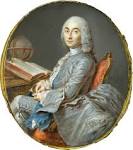
César-François Cassini de Thury |
death César-François Cassini de Thury Died 4 Sep 1784 at age 70 (born 17 Jun 1714). French astronomer and geodesist (Cassini III), who continued surveying work he began while assisting his father, Jacques Cassini (Cassini II), resulting in the first topographical map of France produced by modern principles. His grandfather, Giovanni Domenico Cassini (Cassini I) discovered four satellites of Saturn, a band on planet's surface, and that its ring was subdivided. Cassini I was the first to assume effective direction (1671) of the new observatory established by the Académie Royale des Sciences in Paris, which his descendants in turn continued. Cassini III was the first official director of the observatory when the post was created by the king in 1771. His son was Jean-Dominique Cassini (Cassini IV). |
|
04 Sep 1791
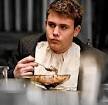
Robert Knox |
birth Robert Knox Robert Knox, Scottish anatomist (died 1862) |
|
04 Sep 1801

Cullen Whipple |
birth Cullen Whipple Born 4 Sep 1801; died 23 Oct 1868 at age 67. American inventor and machinist of Providence, RI, who patented the first practical screw machine in the U.S. for making pointed screws (14 Dec 1852, No. 9,477). Early screws had blunt ends, and it was necessary to drill a starter hole. In Oct 1840, he was one of ten incorporators of The New England Screw Co. He invented a machine for the company to use cutting the threads of screws (patented 18 Aug 1842), another for shaving the heads of screws (patented 6 Apr 1843) and one for removing the burs left in cutting the slots in the heads (patented 19 Apr 1843). He invented and patented seven other machines or devices for improving the manufacture of screws, such as a Screw-Blank Feeding mechanism (3 Jun 1856, No.15,052). |
|
04 Sep 1805

William E. Dodge |
birth William E. Dodge Born 4 Sep 1805; died 9 Feb 1883 at age 77. American industrialist, cofounder of Phelps, Dodge & Company, which was one of the largest mining companies in the US for more than a century. His marriage (1828) to Melissa Phelps connected him with a wealthy New York family; his father-in-law was a successful metals trader. In 1833 Dodge joined the firm of Phelps, Dodge & Company, which for two generations held a foremost place as dealers in copper and other metals. The firm had an important part in the development of Lake Superior copper and of Pennsylvania iron. Dodge also made extensive investments in timber lands and in railroad enterprises - the Erie, Lackawanna, Jersey Central, and Texas Central. |
|
04 Sep 1844

George Dobson |
birth George Dobson Born 4 Sep 1844; died 26 Nov 1895 at age 51. Irish zoologist, chiefly remembered for his laborious investigation into the structure and classification of the chiroptera and insectivora, on both of which he became the chief authority of his time." After graduating with medical training (1867) from Trinity College, Dublin, he rose to the rank of surgeon lieutenant colonel in the army. He also served in the Zulu war of 1879. He was awarded the gold medal of the Dublin Pathological Society for his essay on Diagnosis and Pathology of the Injuries and Diseases of the Shoulderblade. He contributed the sections for Insectivora, Chiroptera, and Rodentia, in the article Mammalia and the articles Mole, Shrew, and Vampire to the ninth edition of the Encyclopedia Britannica. |
|
04 Sep 1846

Daniel H. Burnham |
birth Daniel H. Burnham Born 4 Sep 1846; died 1 Jun 1912 at age 65. Daniel Hudson Burnham was an American architect, raised and educated in Chicago, who gained his early architectural experience with William Le Baron Jenney, the so-called "father of the skyscraper". With John Root (1850-91), he pioneered the construction methods which made modern skyscrapers possible. He designed the dramatic Flatiron Building in New York City. Burnham also gained his reputation as a city planner. In 1909, Burnham and his assistant Edward H. Bennett prepared The Plan for Chicago, which is considered the nation's first example of a comprehensive planning document. |
|
04 Sep 1877

Louis Brennan |
Louis Brennan (technology) Louis Brennan patents the Brennan torpedo. |
|
04 Sep 1882

First newspaper using central electricity |
First newspaper using central electricity In 1882, the first newspaper plant to make use of the newly available electrical power provided by the Edison Illuminating Company was the New York Times. The building had previous been wired, with light fixtures and electric meters installed and inspected by an expert from the Board of Underwriters. There were 27 lamps installed in the editorial room and 25 lamps in the counting room. Next day, in the newspaper's own article, the workers were said to be unanimously in favour of the light provided by the carbon-filament lamps as being brighter and steadier than the gas lighting it replaced. There was no nauseous smell, and the lamps were very convenient to light by simply turning a thumbscrew. Additional lights were added later for the composing and press rooms. |
|
04 Sep 1882

First electric central station |
First electric central station In 1882, the first central electric station to supply light and power was the Edison Electric Illuminating Company at 257 Pearl Street in New York City. Thomas Edison inaugurated its operation by operating a switch in the Wall Street office of his primary financial backer. The station's “Jumbo No.1” generator was a direct-current steam-powered dynamo. The armature alone was 6 tons of its total 27 ton weight, and used air cooling. It was built at the Edison Machine Works in 1881, and had its first test on 5 Jul 1882. It could power about 700 sixteen candlepower lamps. Within 14 months, Edison's first power station served 508 subscribers and powered 12,732 bulbs. |
|
04 Sep 1882

Thomas Edison |
Thomas Edison (technology) Thomas Edison starts the world's first commercial electrical power plant, lighting one square mile of lower Manhattan. |
|
04 Sep 1888
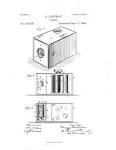
Kodak camera patent |
Kodak camera patent In 1888, George Eastman was issued a landmark U.S. patent No. 388,850 for his box camera. On the same date, he registered the trademark name: Kodak. The Eastman Kodak company was formed 24 Apr 1888. This design was the first Kodak mass-produced camera, and brought photography to the mass market. As described in its advertising, the operation was simple: "Pull the String, Turn the Key, Press the Button." Now anyone could take pictures family, events, indoor and outdoor scenes, and vacations, without needing special skills. Only 22-ounces in weight, it required no tripod or table for support. It used a fixed-focus lens which was still fast enough to take practically instantaneously exposures. Its roll film was enough to take 100 pictures, each 2½ inches diameter. |
|
04 Sep 1888
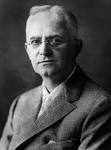
George Eastman |
George Eastman (technology) George Eastman is granted a US patent for his roll film camera, for which he registers the trademark Kodak. |
|
04 Sep 1906
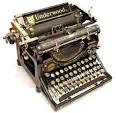
Typewriter |
Typewriter In 1906, U.S. patent No. 830,115 was issued to Robert Eugene Turner of Norfolk, Virginia, for his invention of a "Type Writing Machine,"(typewriter) with a carriage powered by a motor to "return automatically when the end of the writing-line is reached, also to return same by pressing a key-lever on the keyboard to return the carriage at any point of its stroke." Also, line spacing was provided by manual or automatic means. A low-powered motor was adapted to feed the carriage in the printing direction, a high-powered motor for returning the carriage in the reverse direction, and the necessary mechanism to control their action. A buffering mechanism was included to reduce the impact of the returning carriage at the end of its reverse stroke. |
|
04 Sep 1906

Max Delbrück |
birth Max Delbrück Max Delbrück (died 1981), biologist. |
|
04 Sep 1912

William John McGee |
death William John McGee Died 4 Sep 1912 at age 59 (born 17 Apr 1853). American geologist, hydrologist, archaeologist who was noted for his pioneer studies documenting the occurrence of waves of invasions and recessions of ice sheets in North America, thus establishing the complexity of the Great Ice Age. He worked in a number of governmental capacities, including as a director in the U.S. Geological Survey, and was a founder and president of the National Geographic Society. While on the staff of the Bureau of Soils, he organized the landmarkConference of Governors on Conservation of Natural Resources (13-15 May 1908) and has been called the "chief theorist of the conservation movement." As an anthropologist he studied the American Indians and wrote The Seri Indians (1898). |
|
04 Sep 1922

Edward Anthony Spitzka |
death Edward Anthony Spitzka Died 4 Sep 1922 at age 46 (born 17 Jun 1876). American anatomist and brain morphologist who assisted at the autopsy (29 Oct 1901) of the brain of Leon Franz Czolgosz, the assassin of U.S. president William McKinley. At the time, he had just published an exhaustive series of eight papers on the human brain, but was only in the fourth year of his medical training. Although he detected a few very minor variations in gyri and sulci patterns in the brain of Czolgosz, he reported in the New York Medical Journal (1902) that “nothing has been found in the brain of this assassin that would condone his crime.” He became editor of, and revised, American editions of Gray's Anatomy. Throughout his career he studied the brain morphology of groups of famous people, different races, and criminals, thought ultimately he was unable to link traits to brain structure. |
|
04 Sep 1926
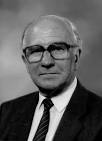
George William Gray |
birth George William Gray George William Gray (died 2013), Scottish chemist, discoverer of stable liquid crystal materials leading to the development of liquid crystal displays. |
|
04 Sep 1927
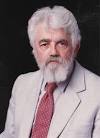
John McCarthy |
birth John McCarthy John McCarthy (died 2011), American computer scientist and cognitive scientist. |
|
04 Sep 1939
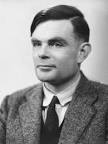
Alan Turing |
Alan Turing (computer science) Alan Turing and Gordon Welchman report to the United Kingdom Government Code and Cypher School, Bletchley Park. |
|
04 Sep 1940

Hans Zinsser |
death Hans Zinsser Died 4 Sep 1940 at age 61 (born 17 Nov 1878). American bacteriologist and immunologist who was an international authority on typhus, the deadly disease for which he isolated the typhus germ (1936). By 1939 he had perfected a method to produce enough anti-typhus vaccine to protect a nation. He travelled abroad to study disease outbreaks: an typhus epidemic in Serbia (1915), cholera in the Soviet Union (1923), a prison typhus epidemic in Mexico (1931) and lectured in China (1938). He published over 160 scientific papers. The cause of typhus is Rickettsia organisms carried by a louse or a rat flea and transmitted to humans by a bite from the parasites, especially in areas of poor sanitation and overcrowding. He wrote his autobiography in the third person, As I Remember Him, while dying of leukemia. |
|
04 Sep 1951

Transcontinental US TV |
Transcontinental US TV In 1951, President Harry Truman inaugurated transcontinental television service in the U.S. when AT&T carried his address to the opening session of the Japanese Peace Convention in San Francisco. The conference would formalize the end of hostilities with Japan, opening the door for Japan's economic recovery. The largest single television audience to date, estimated at over 30 million people, viewed the President Harry Truman, some as far away as New England. Eighty-seven stations all over the U.S. received and broadcast Truman's speech, the result of a $40 million infrastructure investment by AT&T. Microwave radio technology transmitted the television signal from San Francisco to Chicago. From there, it was carried on existing coaxial cables to the East Coast.. |
|
04 Sep 1953

REM sleep |
REM sleep (medicine and human s) The discovery of REM sleep is first published by researchers Eugene Aserinsky and Nathaniel Kleitman of the University of Chicago. |
|
04 Sep 1961
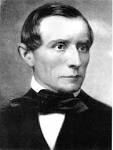
Emil von Dungern |
death Emil von Dungern Emil von Dungern (born 1867), German serologist. |
|
04 Sep 1964

Forth Road Bridge |
Forth Road Bridge In 1964, the Forth Road Bridge opened. At 6,156 feet long it was the longest in Europe at that time. The Forth Road Bridge at Queensferry is shown at left. Both rail (1890) and road bridges are sited where hard volcanic rock is close to the surface and can make good foundations for the structures. Both bridges emphasise the historical importance of the Forth crossing as the opening of the Forth Road Bridge finally brought to an end a ferry service that could be traced back 800 years. |
|
04 Sep 1965

Albert Schweitzer |
death Albert Schweitzer Albert Schweitzer (born 1875), Alsatian medical missionary. |
|
04 Sep 1977
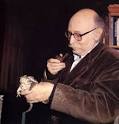
Jean Rostand |
death Jean Rostand Died 4 Sep 1977 at age 82 (born 30 Oct 1894). French biologist and historian who did research as an experimental biologist in amphibian embryology, artificial ovulation, the effect of cold on reproductive systems, parthenogenesis, teratogeny and anomalies of batrachians (the order of amphibians which includes the frogs and toads). He was also known as a philosopher and a writer popularizing the science of evolutionary theory, genetics, entomology, and herpetology, as well as the history of science. Rostand was an outspoken critic of nuclear proliferation and the death penalty. |
|
04 Sep 1997
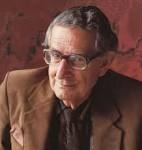
Hans Eysenck |
death Hans Eysenck Hans Eysenck (b. 1916), psychologist. |
|
04 Sep 2006

Meningitis vaccine |
Meningitis vaccine In 2006, a vaccine for a type of meningitis was offered for the first time in Great Britain for all babies at two, four and 13 months as part of the national childhood immunisation programme. The vaccine is designed for protection against pneumococcal disease which causes meningitis and septicaemia, a very serious infection, with a death rate of 20 per cent. Of children that survive infection, a quarter suffer life-long brain damage, deafness and epilepsy. Babies are particularly vulnerable. The Wyeth pharmaceuticals company, the vaccine supplier, reported that its use in America had shown a significant reduction in cases. An estimated 50 babies a year are expected to be protected from the devastating after-effects of pneumococcal meningitis. |